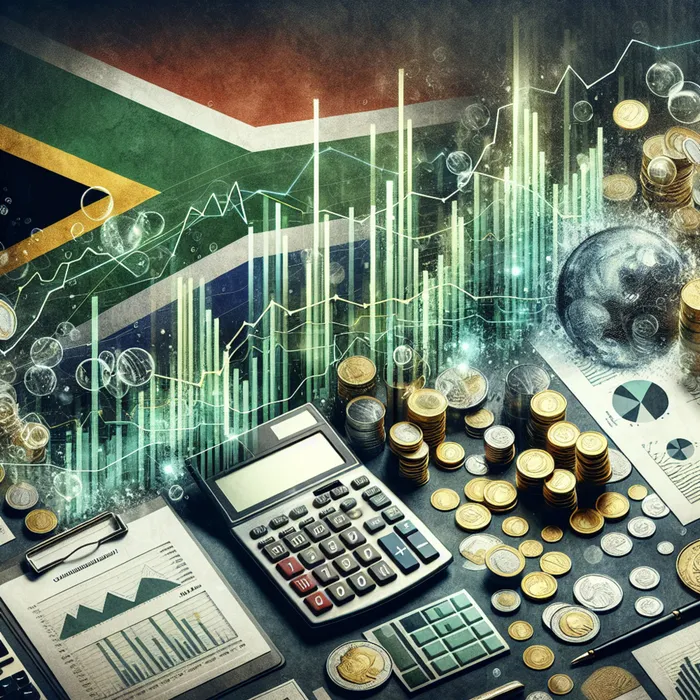Economic growth may improve but SA still exposed to global headwinds and domestic instability

While South Africa's economic outlook may improve over the medium term, US tariffs are still a concern.
Image: Sunday Independent/Ron AI
South Africa’s economy could grow as much as 0.8% in the second quarter of 2025 after contracting in the first three months of the year, said Old Mutual chief economist Johann Els.
The anticipated rebound comes off a weak base though. If agriculture is excluded, growth in the first three months would have been negative, with sectors such as mining, manufacturing, utilities, and construction all in “deep negative territory,” Els said during a recent webinar.
Over the medium term, Els expects growth to improve modestly from the 1.1% annual average of the past 16 years to between 2.5% and 3%.
“We are making some headway to reducing the structural constraints in the economy,” he said, pointing to progress in electricity, logistics, and water supply with the distance of the private sector through Operation Vulindlela. However, structural issues means growth of 5% to 6% remains “highly unlikely,” Els added.
Private sector participation is key to unlocking growth, Els said, with a slightly more stable policy outlook helping to build business confidence following the formation of the Government of National Unity (GNU) in 2024. “[Investor] concern has eased quite a bit,” he noted, though investor uncertainty returned amid budget and political questions earlier in the year.
While some of the uncertainty that characterised the first quarter, such as delays in the budget process, tariff volatility, and GNU stability, has eased slightly, Anchor Capital’s chief investment officers, Nolan Wapenaar and Peter Armitage, noted that “South Africa’s economic outlook has weakened, reflecting a combination of deepening political uncertainty and mounting global pressures”.
The South African Reserve Bank (SARB) has downgraded its 2025 gross domestic product (GDP) growth forecast from 1.7% to 1.2%, while the International Monetary Fund projects just 1% growth for the year. According to Anchor, “investor confidence has been eroded by persistent policy uncertainty and delays in critical structural reforms.”
Els expects “one more interest rate cut” in July from the SARB and then a sideways path, with inflation easing slowly and contributing to more stable conditions. “There's a window of opportunity to lower the inflation target. I think we should grab that,” he said. The current fiscal picture is also looking more positive, with a primary surplus, stabilising debt-to-GDP ratio, and the potential for positive ratings action over the next six to 12 months.
This shifting backdrop, combined with a weakening dollar, could boost the rand. “I think there's potential for the rand to strengthen quite sharply in the short term,” said Els, adding that it may move back toward the R17/$1 range, and possibly even reach R16.
Despite challenges, Anchor Capital notes that “low inflation is offering some relief by supporting real disposable incomes and household spending,” with potential boosts from reduced debt-servicing costs and two-pot pension withdrawals. However, risks remain. One key short-term risk is the pending expiry of the 90-day US tariff reprieve in early July. Without an extension, certain South African exports to the US, its second-largest trading partner, could face tariff hikes of up to 30%, undermining export competitiveness.
Globally, economic conditions in major trade partners such as China and the Euro Area are expected to hold up better than those in the United States. “China’s economy is growing at a 5% plus pace in the first half of this year,” Els said, while Europe is also benefiting from expected infrastructure investment and possible tax cuts.
In contrast, US growth is slowing. “I expect recessionary conditions later this year in the US,” said Els, noting the US’s broader recession definition and significant “data noise” from shifting spending patterns and tariffs.
Wapenaar and Armitage caution that “the return of US President Donald Trump to office has indeed brought about exactly what many had anticipated: a surge in policy uncertainty and renewed volatility across financial markets.”
They add that “policy turbulence, especially surrounding aggressive tariff announcements, has already taken a visible toll on global sentiment.” Global growth forecasts for 2025 and 2026 have been revised down to below 3%, well under the 20-year average of 3.4%.
Els believes this weaker US outlook will eventually lead to interest rate cuts toward the end of 2025 and into 2026, further weakening the dollar. “Those conditions in the US should lead to [a] weaker dollar, which is great for the rest of the world,” he said. He expects US consumers and, ultimately, voters will continue to demand cheaper imports, which could pressure a return to free trade after the current administration. “Globalisation is alive and well,” he said.
According to Anchor Capital, “the Federal Reserve faces dual pressures of rising policy uncertainty and persistent concerns around inflation,” while geopolitical instability continues to reshape fiscal priorities worldwide.
Related Topics: